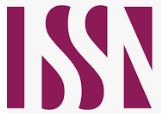استعمال انموذج موكن للتجانس الاطرادي في اعداد اختبار الترابطات الابداعية لميدنيك لدى طلبة المرحلة الاعدادية
Keywords:
creative, Mukken, students, homogeneity, regularAbstract
This research aimed to prepare vocabulary for the Mednick Creative Interconnections Test to measure the ability to think creatively using a model of regular homogeneity. It also aimed to calculate individuals’ estimates corresponding to each possible total raw score on the test. The researcher followed the steps of the descriptive approach. The tool was the Mednick Creative Interconnections Test vocabulary in the form of (A) It is designed for application in the secondary stage. The test in its initial form consists of (40) items. It was applied to a stratified random sample of (200) male and female students in the secondary stage in the city of Baghdad, next to Al-Karkh. The statistical analysis program (eirt-item response theory assistant for) was used. Excel).
The results resulted in the following: It was possible to prepare items to test creative interconnections using a robust model of regular homogeneity on a single linear grading scale with one zero and a fixed unit of measurement. The number of test items in its final form reached (38). The individuals' ratings corresponding to each possible total raw score on the test were also calculated, and the test in its final form achieves validity and reliability. In light of the results, the researcher recommended the need to pay attention to providing the necessary capabilities to use a model of regular homogeneity in analyzing test models, providing the necessary computer programs and training those in charge of the evaluation process on those programs. He also suggested conducting more studies and research related to building and grading the creative interconnections test using.
References
● أبو عواد، فرمال محمد عثمان. (2018). استقصاء تقديرات معالم الفقرات والقدرة ودالة المعلومات لاختبار القدرات المعرفية باستخدام النموذج اللوجستي ثلاثي المعلمة. مجلة دراسات نفسية وتربوية، جامعة قاصدي مرباح 11 (1) 1-17.
● الجمل، هبه محمد إبراهيم. (2016). تدريج بنك أسئلة في مادة الرياضيات لتلاميذ الصف الثالث الابتدائي باستخدام النموذج اللوجيستي الثلاثي المعلم. مجلة كلية التربية (21) ،83 – 867.
● الخياط، ماجد محمد .(2012). درجة مطابقة اختبار تحصيلي وفق نموذج راش أحادي المعلمة في الكشف عن مستوى المعرفة العلمية في المهارات الرياضية لدى طلب الصف الثامن الأساسي. مجلة جامعة الأقصى، سلسلة العلوم الإنسانية ، 16(1)، 87-111.
● الطراونة ، صبري حسن خليل (2022). مطابقة فقرات اختبار في تصميم البحث لنموذج التجانس الاطرادي لنظرية الاستجابة للفقرة ، مؤتة للبحوث والدراسات ، مج 37، ع2.
● الطيطي، محمد. ( 2007) . تنمية قدرات التفكير الإبداع. عمان: دار المسيرة للنشر والتوزيع والطباعة.
● العكايلة، عبد الناصر سند عبد المطلب .(2017) .استخدام النموذج ثنائي المعلم كأحد نماذج نظرية الاستجابة للمفردة في تدريج مفردات اختبار التفكير الاستدلالي المعرفي على طلبة المرحلة الثانوية في مديرية تربية لواء الجامعة بالأردن. المجلة الدولية التربوية المتخصصة. 6 (8) ، 159- 174 .
● علي، الهام فاضل عباس، (2001): الصحة النفسي وعلاقتها بموقع الضبط والجنس والعمر لطلبة المرحلة الثانوية، (رسالة ماجستير غير منشورة) جامعة بغداد، كلية التربية – ابن رشد.
● عودة أحمد سليمان. .(2010). القياس والتقويم في العملية التدريسية (ط.4). دار الأمل.
● كاظم ، علي مهدي ، ( 1994) ، بناء مقياس مقنن لسمات شخصية طلبة المرحلة الاعدادية، اطروحة دكتوراه غير منشورة, كلية التربية ابن رشد, جامعة بغداد.
● الكبيسي، كامل ثامر. (1987). بناء وتقنين مقياس لحساب الشخصية ذات الاولوية القبول في الكليات العسكرية لدى طلبة الصف السادس الاعدادي في العراق. (اطروحة دكتوراه غير منشورة)، جامعة بغداد، كلية التربية، ابن رشد.
● المرافي ، بسام أحمد (2003): مقارنة صعوبة الفقرة وقدرة الفرد في ضوء كل من النظرية الكلاسيكية ونموذج راش , رسالة ماجستير غير منشورة , جامعة مؤتة.
● النفيعي، عبد الرحمن عبد الله احمد. (2018) . "تقنين اختبار سنجدرس – أومن SON-R6-40 للذكاء غير اللفظي على طلاب الدراسات العليا في كلية التربية جامعة ام القرى في ضوء نموذج موكن للتجانس الاطرادي"، مجلة البحث العلمي في التربية ، العدد التاسع عشر ، ج1، السعودية.
● Alam, S. (2005). Undimnshnal and Mutedimnshnal Item Respunse test and there Applide in Psychometric an Educatinal Measurement, dar alfikr alaraby, Cairo.
● Baker, F.(2001). The Basic of Item Response Theory, Boston: Carol Boston.
● Basokcu, O & Ogretmen, T. (2014). Comparison of parametric and nonparametric item response techniques in determining differential item functioning in polytomous scale, American Journal of Theoretical and Applied Statistics, 3(2), 31-38.
● cropley, A. (1976). Neurotic Distortion of the Creative Process. Kansas: University Press.
● Demars, C (2010). Item Response Theory, New York: oxford University press.
● Douglas, J. (1997). Joint Consistency of Nonparametric Item Characteristic Curves and Ability Estimation. Psychometrika, 62, 7-28.
● Dychouse, M. (2009). A Comparison of Model-Data Fit For Parametric & Nonparametric Item Response Theory Models Using Ordinal-Level Ratings. Dissertation Abstract International. (No.3379330).
● Hays, R. Liu, H. Spritzer, K & Cella, D. (2007). Item Response Theory Analyses of Physical Functioning Items in the Medical Outcomes Study. Journal of Medical Care, 45(5), 533-538.
● Mednick, S. (1964). Incubation of Creative Performance and Specific Associative Priming. Journal of Abnormal Psychology, 69(2) 82-88.
● Mednick, S. (1971). Remote associates test: high school form1.examier’s manual. Boston: Houghton Mifflin Company.
● Pilirto, J. (1992). Understanding those who create. Ohio: Allyn &Bacon.
● Sijtsm, K. (1998). Methodology review: Nonparametric IRT approaches to the analysis of dichotomous item scores, Applied Psychological Measurement, 22, 3-31.
● Sijtsma, K & Hemker, B. (2000). A Taxonomy of IRT Models For Ordering of Persons and Items Using Simple Sum Scores, Journal of Educational and Behavioral Statistics, 25, 391-415.
● Sijtsma, K & Verweij, A. (1992). Mokken scale analysis: the cortical Considerations and an applications to transitive tasks, Applied Measurement in Education, 5(4),355-373.
● Sijtsma, K. & Molenaar, I. (2002). Introduction to nonparametric item response theory. Sage Publication, London: International Educational and Professional Publisher.
● Stochl, J. (2006). Nonparametric extension of item response theory models and its usefulness for assessment of dimensionality of motor tests. Acta Universitatis Carolinae, 42(1), 75-94.
● Susan. E & Steven, P. (2000) . Item Response Theory for Psychologists, London: Lawrence Erlbaum Associates.
● Zimmerman, D. W. (1996). A Note on Homogenety of Variance of Scores and Ranks. The Journal of Experimental Education. 64, 351-362.








